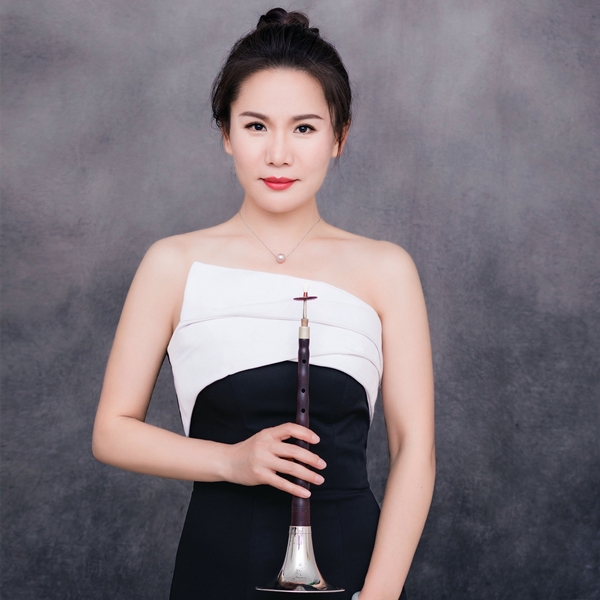Hu Meiling

Hu Meiling is a young teacher of the Folk Music Department of the Conservatory of Music, and a postgraduate tutor.
Manchu, member of the Communist Party of China. Deputy Director of the Office of the National Wind Music Research Association of the Chinese Music Association, a member of the Chinese National Orchestra Society, a member of the Beijing Musicians Association, the executive director of the Chinese Suona Professional Committee, and the director of the Chinese Hulusi Bawu Professional Committee. In 2019, he was a judge of the "China Instrumental Music Competition" of China Central Radio and Television.
Born in a musical family, he studied the art of suona performance with his uncle, the famous suona player Mr. Hu Haikuan since childhood, and then systematically studied various suona and minority wind music performance skills with his uncle, Mr. Hu Haiquan, a famous ethnic wind master. In addition to the Han suona playing skills, he is proficient in more than ten kinds of characteristic wind instruments such as the pipe, the small muffled flute, the cucurbit flute, the bawu, the tuliang, the scorpion, the Korean suona, and the Xinjiang suona. The playing technique is comprehensive, the styles are diverse, and it has its own unique playing temperament and charm. Invited to hold two solo recitals and academic lectures at Drake University and Grinnell College in the United States. With major domestic professional groups to visit the United States, Germany, Italy and other countries and Hong Kong, Macao and Taiwan regions.
Created and composed Suona Solo Songs "Miao Ling Fei Song", "Dong Nationality Song", "Girls in Daban City"; Xiao Solo "Feng Xiao Yin"; Small Muffled Solo "Yi Family Happy Song"; Bawu Solo "Colorful Clouds" Rhythm"; Biji's Solo "Happy Song"; Nose Flute Solo "Amorous Nose Flute" and other works. He has been invited by CCTV many times to record exclusive interviews with famous experts, and his works have been broadcast on CCTV's "Music Channel" for many times, and have been well received by industry experts.
He has successively published "Easy Introduction to Suona" (cooperation with Hu Haiquan); "Easy Introduction to Hulusi", "Suona Enlightenment Teaching" (10 music CDs), "Chinese Minority Suona Teaching Songs" and other works. Independently wrote and published several academic papers such as "Thinking about the Inheritance of National Wind Music", "On Suona Performance Skills", "Thinking about Constructing the Education Curriculum of Ethnic Musical Instruments in Higher Music Art Colleges", "Hu Haiquan Suona Performance Art" and so on. .
The professional students trained have won gold and silver in various national, provincial and municipal authoritative competitions. He has won the title of "Excellent Instructor" for many times.
Art deeds have been reported by CCTV, Xinhuanet, Southern Metropolis Daily and other domestic and foreign media. Personal artistic achievements were included in the "Chinese Music Encyclopedia Suona Volume".
Similar artist
Involving musical instruments
Involved portfolio
Involved news
Popular artists
- 01 Cao Yang
- 02 Bian Memorial
- 03 Zhang Xiuyan
- 04 Liu Qingyao
- 05 Jiang Ying
 渝公网安备 50010702504639号
渝公网安备 50010702504639号